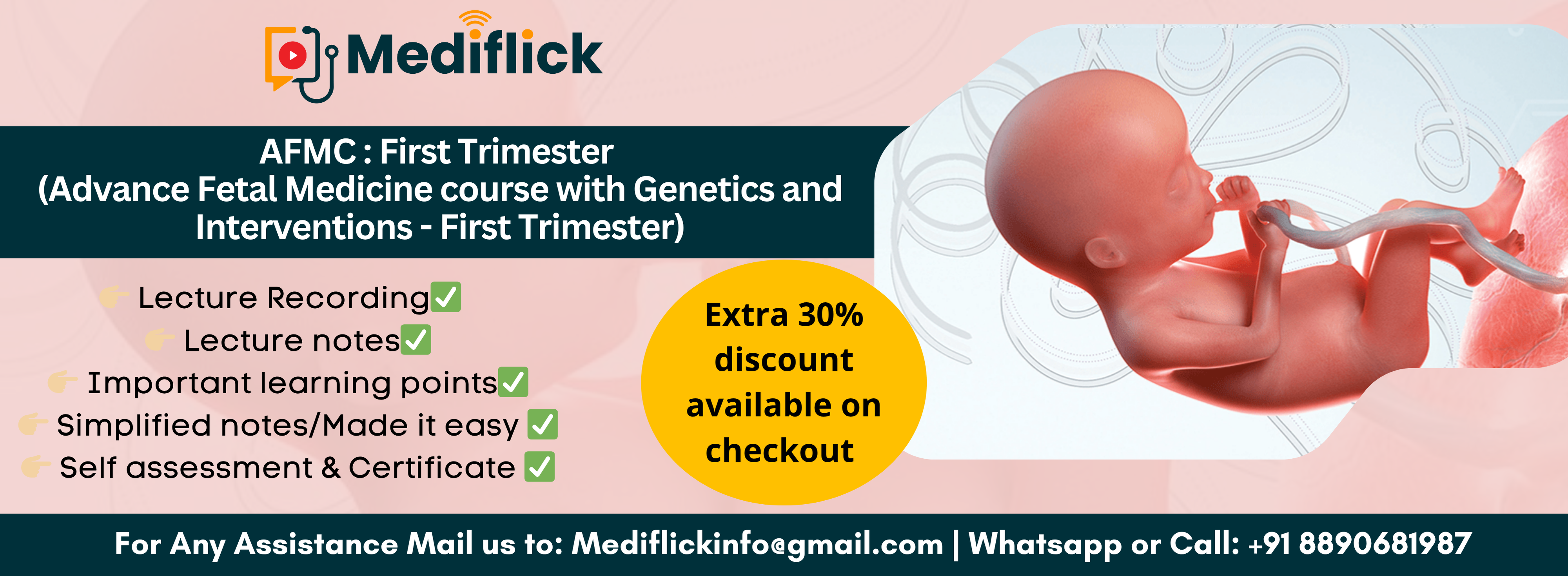1.Prenatal Diagnosis in Fetal Medicine
Understanding Prenatal Diagnosis
Why is Prenatal Diagnosis Important?
- Babies are precious, yet sometimes they require a comprehensive evaluation while still in the womb!
- Prenatal diagnosis is essential for identifying genetic, structural, and functional issues in the fetus.
- This can be accomplished through:
- Non-invasive tests (generally safe, though not entirely foolproof!)
- Invasive tests (more precise, but come with certain risks!).
The objective? Early identification leads to improved planning and management.
2: Categories of Prenatal Testing
Non-Invasive Prenatal Testing (NIPT) – The Initial Screening Tool ✅ "Think of it like an Instagram filter—offering a glimpse, but not the complete story!"
🔹 What is NIPT?
It involves a maternal blood test that identifies cell-free fetal DNA (cfDNA)
Screening for chromosomal irregularities such as Trisomy 21 (Down Syndrome), Trisomy 18 (Edwards Syndrome), and Trisomy 13 (Patau Syndrome).
🔹 Advantages:
✔️ No risk to the fetus
✔️ High sensitivity for prevalent aneuploidies
🔹 Disadvantages:
❌ Not diagnostic—merely a screening method!
❌ It does not identify structural abnormalities
🔹 When is it utilized?
- In high-risk pregnancies (older maternal age, past abnormal pregnancies, unfavorable combined screening outcomes).
Invasive Prenatal Testing – The Definitive Method✅
" NIPT is the teaser, invasive testing delivers the complete narrative!" 🎬
| Test | Timing (Gestational Age) | What’s Taken? | Diagnoses | Miscarriage Risk |
| Chorionic Villus Sampling (CVS) | 11-14 weeks | Placental cells | Chromosomal & genetic disorders | 0.5-1% |
| Amniocentesis | 15-20 weeks | Amniotic fluid (contains fetal cells) | Chromosomal, genetic disorders, neural tube defects | 0.1-0.3% |
| Cordocentesis (PUBS) | >18 weeks | Fetal blood from the umbilical cord | Fetal anemia, infections metabolic disorders | 1-2% |
🔹 Why do we still rely on invasive tests? They provide DIAGNOSTIC certainty! If abnormalities are detected, we can confirm the diagnosis with absolute accuracy.
3: Key Fetal Conditions Identified Through Prenatal Testing
Chromosomal Abnormalities – The Genetic Mix-Ups!
👶 "Consider chromosomes as a recipe book—sometimes pages are added or omitted!"
| | Chromosomal Abnormality | Ultrasound Indicators | Additional Indicators |
| Trisomy 21 (Down Syndrome) | Extra chromosome 21 | ↑ Nuchal translucency, absent nasal bone, short femur/humerus | ↑ hCG, ↓ PAPP-A |
| Trisomy 18 (Edwards Syndrome) | Extra chromosome 18 | Clenched fists, choroid plexus cysts, strawberry skull | Severe IUGR, cardiac anomalies |
| Trisomy 13 (Patau Syndrome) | Extra chromosome 13 | Holoprosencephaly, polydactyly, facial clefts | Severe brain & heart malformations |
| Turner Syndrome (45, X0) | Missing an X chromosome | Cystic hygroma, coarctation of aorta | Female fetus with short stature & gonadal dysgenesis |
🩺 Most effective diagnostic method? Amniocentesis with karyotyping or FISH/microarray.
Structural Abnormalities – When Development Goes Awry!
👷♂️ "Picture the fetus as a house under construction—sometimes the wiring, plumbing, or walls aren't built correctly!"
1️. Neural Tube Defects (NTDs)
🧠 What Occurs?
The spinal cord or brain fails to close properly.
Common Uses:
- Spina Bifida → Open defect in the spine
- Anencephaly → Absence of parts of the brain & skull (fatal)
- Encephalocele → Brain protrusion through the skull
2. Congenital Diaphragmatic Hernia (CDH)
🫁 What Occurs?
A defect in the diaphragm allows stomach/intestines to enter the chest cavity, displacing the lungs & heart!
🔹 Signs:
- Missing stomach bubble in the abdomen
- Mediastinal shift (heart pushed to one side)
Polyhydramnios (the fetus struggles to swallow amniotic fluid properly!)3. Gastrointestinal Anomalies
"Sometimes the fetal plumbing gets blocked!"
Common GI Issues:
- Duodenal Atresia ("Double Bubble Sign") → Strongly associated with Down Syndrome
- Omphalocele vs. Gastroschisis:
- Omphalocele → Herniated bowel covered by a membrane (connected to aneuploidies).
- Gastroschisis → Herniated bowel without a covering membrane (isolated defect).
4: Prenatal Diagnosis in Unique Situations
Twin Pregnancies – A Challenging Scenario!
"Twins are delightful but complicate prenatal testing!"
ESSENTIAL FOR TWINS BABIES.
- Dichorionic twins → Separate placentas; hence both sacs must be sampled individually!
- Monochorionic twins → Shared placenta; usually one sample suffices
NEVER use a single needle for both sacs! Cross-contamination can result in erroneous outcomes.
5: Aftercare and Risk Management Post-Procedure
✅ "Fantastic, you’ve completed the test. What’s next?"
🔹 Post-invasive testing guidelines: - Observe for cramping, fluid leakage, and signs of infection.
- Rh-negative mothers require Anti-D immunoglobulin!
- Refrain from vigorous activity for 24 hours.
Common Misconceptions:
❌ "Bed rest prevents miscarriage!" → No evidence supports this!
❌ "Antibiotics are always necessary post-amniocentesis!" → Not true!
6: Essential Takeaways – Key Points to Remember
🔹 NIPT serves as a SCREENING tool—not diagnostic!
🔹 CVS & Amniocentesis remain the gold standards for genetic evaluation.
🔹 Exercise caution with twin pregnancies—always sample separately
